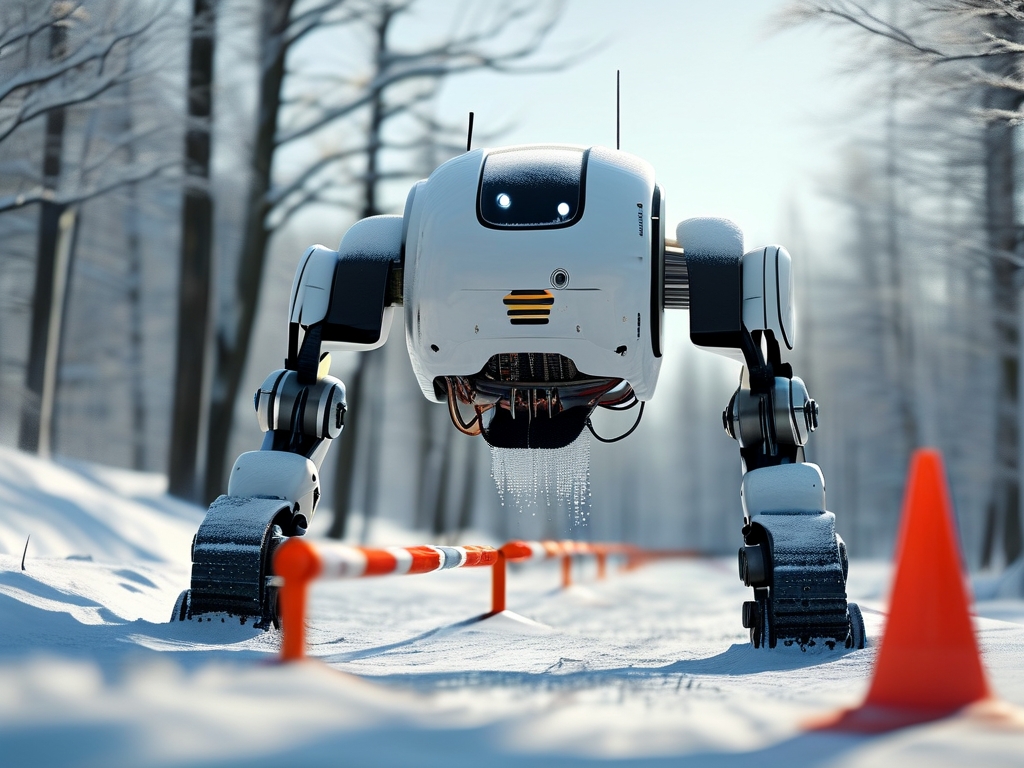The integration of robotics into challenging terrains has reached a new milestone with the development of robotic snow slalom technology. This innovation enables autonomous machines to navigate through snow-covered obstacle courses, mimicking the agility of human skiers while adapting to unpredictable environmental conditions. From polar exploration to winter rescue missions, this technology promises to revolutionize how robots operate in extreme cold-weather environments.
The Challenge of Snow Terrain
Snow presents unique challenges for robotic navigation. Its soft, shifting texture, combined with hidden obstacles like ice patches or buried debris, demands a combination of sensory precision and mechanical adaptability. Traditional wheeled or tracked robots often struggle with slippage, uneven weight distribution, and limited visibility in snowy conditions. Robotic slalom technology addresses these issues by integrating advanced sensors, machine learning algorithms, and dynamic motion control systems.
Core Components of Snow Slalom Technology
-
Sensor Fusion for Environmental Awareness
Robots equipped with LiDAR, RGB-D cameras, and thermal imaging systems create real-time 3D maps of their surroundings. These sensors detect poles, trees, or other markers embedded in snow, while simultaneously monitoring snow density and subsurface irregularities. For example, LiDAR captures precise distance measurements, while thermal cameras identify hidden ice layers that could destabilize the robot. -
Adaptive Motion Algorithms
Machine learning models trained on snow physics enable robots to predict terrain changes. Reinforcement learning allows robots to "practice" virtual slalom courses, optimizing paths for speed and stability. When encountering fresh snowdrifts or icy patches, the system recalculates balance and torque distribution across limbs or treads to prevent tipping. -
Mechanical Design Innovations
Hybrid locomotion systems—such as retractable treads paired with rotating limbs—provide versatility. For instance, a robot might use treads for flat sections but deploy leg-like appendages to step over compacted snowbanks. Materials science also plays a role: anti-freeze coatings prevent ice buildup on joints, and lightweight yet durable alloys ensure structural integrity in sub-zero temperatures.
Case Study: Field Testing in Alpine Conditions
In 2023, a team from the Norwegian University of Science and Technology deployed a slalom-enabled robot named FrostRunner in the Arctic Circle. The robot successfully completed a 500-meter course featuring 30 poles spaced irregularly across a slope with 25° incline. Key achievements included:

- 98% pole detection accuracy despite heavy snowfall.
- Dynamic gait adjustment when traversing slushy sections.
- Energy efficiency improvements of 40% compared to earlier models, thanks to AI-optimized pathfinding.
Applications Beyond Sports Simulation
While inspired by ski slalom, this technology has far-reaching implications:
- Search and Rescue: Robots can locate avalanche victims faster than human teams, navigating debris fields with precision.
- Climate Research: Autonomous platforms collect snowpack data in remote regions, aiding climate modeling.
- Infrastructure Inspection: Drones and ground robots monitor snow-loaded power lines or railway tracks in hazardous weather.
Ethical and Technical Hurdles
Despite progress, challenges remain. Sensor reliability drops in whiteout blizzards, and ethical debates arise over replacing human roles in rescue operations. Additionally, energy consumption in extreme cold limits mission durations. Researchers are exploring solutions like solar-snow hybrid charging systems and swarm robotics to address these limitations.
Future Directions
The next phase focuses on human-robot collaboration. For example, a slalom robot could guide skiers through unsafe zones or assist in building emergency shelters. Advances in quantum computing may further enhance real-time decision-making, while biomimetic designs—such as penguin-inspired weight distribution—could improve efficiency.
Robotic snow slalom technology exemplifies the convergence of AI, mechanical engineering, and environmental science. By mastering the art of snow navigation, robots are poised to become indispensable allies in humanity’s efforts to explore and protect icy ecosystems. As this field evolves, it will not only push the boundaries of autonomy but also deepen our understanding of interacting with Earth’s most unforgiving landscapes.

